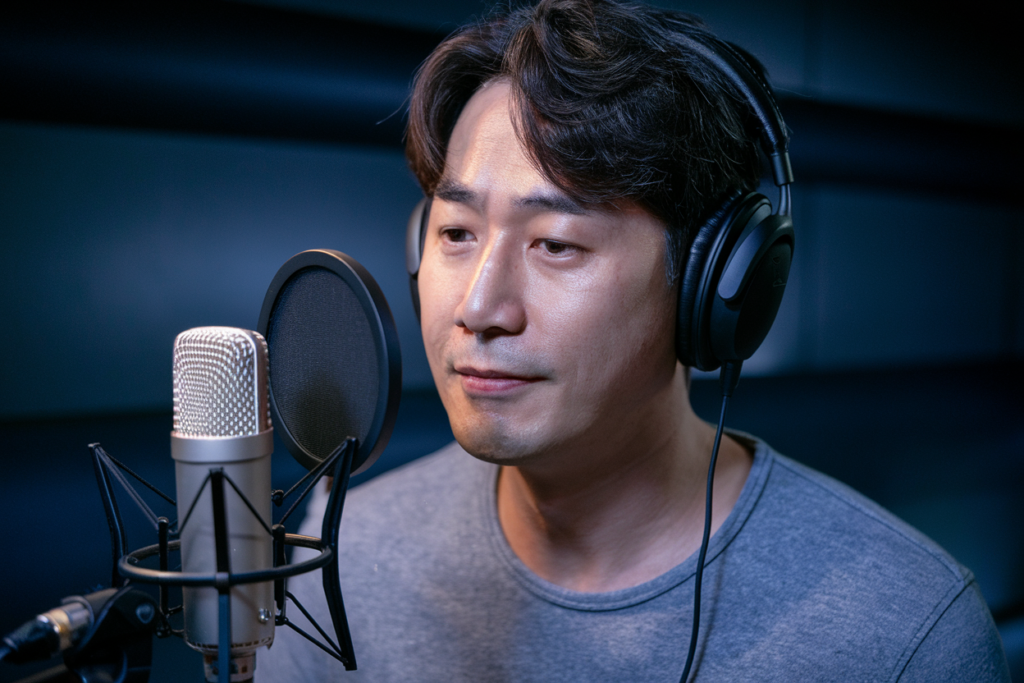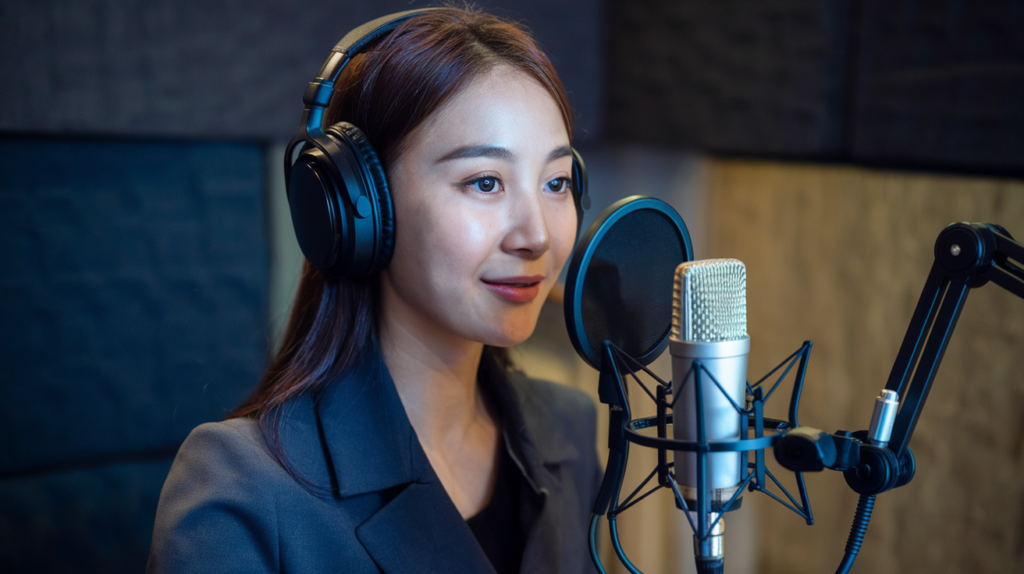Key Takeaways
- Cultural Nuances: Understanding Korean culture and communication styles is essential for creating authentic voiceovers that resonate with the audience.
- Language Proficiency: Fluency in spoken and written Korean ensures accurate pronunciation, intonation, and emotional delivery, which is crucial for effective voiceovers.
- Script Adaptation: Tailoring scripts to capture idiomatic expressions and local contexts enhances relatability and maintains the intended message.
- Vocal Quality: A clear, warm, and expressive vocal delivery improves engagement and ensures that messages are effectively communicated.
- Recording Environment: A quiet recording space with good acoustics is vital for producing professional-sounding audio files free from distractions.
- Common Mistakes to Avoid: Be mindful of neglecting cultural nuances, inadequate script adaptation, poor vocal delivery, ignoring sound quality, and rushed pacing to enhance project effectiveness.
Ever wondered what it takes to nail the perfect Korean voiceover? Whether you’re a seasoned pro or just starting out, understanding the nuances of Korean voiceover guidelines can make all the difference in your project’s success. With its rich culture and unique linguistic features, getting it right is crucial for connecting with your audience.
Overview of Korean Voiceover Guidelines
Korean voiceovers require an understanding of cultural nuances and language specifics. Mastering these guidelines enhances the effectiveness of your projects.
Language Proficiency
Fluency in both spoken and written Korean is essential for voice talent. It ensures accurate pronunciation, intonation, and emotion in delivery.
Cultural Sensitivity
Korean culture influences communication styles. Familiarity with social norms helps voice artists connect authentically with the audience. Consider regional dialects, as they carry distinct characteristics that add depth to your recordings.
Script Adaptation
Adapting scripts for local contexts is crucial. Ensure that translations capture idiomatic expressions while maintaining the intended message. This adaptation makes the content relatable for listeners.
Vocal Quality
Voice actors must pay attention to vocal quality—clarity, warmth, and expressiveness matter greatly. Selecting a suitable tone can enhance engagement and ensure messages resonate.
Recording Environment
A quiet recording environment minimizes distractions and technical issues. Good acoustics contribute to professional-sounding audio files that meet industry standards.
By following these guidelines, you’ll elevate your Korean voiceover projects, ensuring they not only communicate effectively but also touch hearts within the audience.
Importance of Following Guidelines
Following voiceover guidelines is essential for creating impactful projects. Adherence to these standards enhances the quality and effectiveness of your work, ensuring that your message resonates with the audience.
Cultural Accuracy
Cultural accuracy plays a vital role in successful voiceovers. Understanding Korean culture helps you connect deeply with listeners. When you incorporate cultural references and idiomatic expressions, it strengthens authenticity. For instance, using local phrases can evoke familiarity and engagement. A nuanced approach shows respect for the culture and creates a more relatable experience for your audience.
Vocal Delivery
Vocal delivery significantly influences how your message is received. Clarity and expressiveness are crucial for capturing attention. Your tone should match the content’s emotion—whether it’s excitement, sincerity, or urgency—to create an immersive experience. A quiet recording environment enhances sound quality, minimizing distractions that could detract from your performance. Remember, effective vocal delivery not only communicates information but also conveys feelings that resonate with listeners on a personal level.
Key Elements of Korean Voiceover
When it comes to Korean voiceover, several key elements contribute to a successful project. Understanding these factors can significantly enhance the effectiveness of your message.
Script Adaptation
Script adaptation plays a crucial role in Korean voiceovers. You want to ensure that translations capture idiomatic expressions while maintaining the intended message. This process involves not just translating words but also adapting cultural references and nuances that resonate with a local audience. A well-adapted script will feel natural and relatable, making it easier for listeners to connect with your content.
Voice Quality and Clarity
Voice quality and clarity are vital in delivering effective voiceovers. The voice artist should possess a clear, articulate delivery that enhances comprehension. Whether it’s a commercial or an animated character, the tone needs to align with the project’s objectives. A warm, engaging voice can draw listeners in, while crisp diction ensures every word is understood without any confusion.
Timing and Pacing
Timing and pacing are essential aspects of any successful voiceover project. Effective pacing allows emotions to resonate with listeners; too fast can lead to misunderstandings, while too slow may cause disengagement. Pay attention to how phrases flow together—it’s often beneficial for voice actors to practice their lines multiple times before recording. Proper timing helps maintain listener interest and keeps the narrative engaging throughout your content.
By focusing on these key elements—script adaptation, voice quality and clarity, along with timing and pacing—you create impactful Korean voiceovers that truly connect with your audience.
Common Mistakes to Avoid
Avoiding common pitfalls in Korean voiceovers can significantly enhance the quality of your projects. Here are several mistakes that often occur:
- Neglecting Cultural Nuances: Ignoring cultural references leads to a disconnect with listeners. Ensure you understand local idioms and expressions to create authentic voiceovers.
- Inadequate Script Adaptation: Translating scripts word-for-word may distort meanings. Tailor translations to capture the essence of the message while maintaining clarity for the audience.
- Poor Vocal Delivery: Skipping vocal training results in unclear or monotone performances. Prioritize expressiveness and variation in tone, matching emotions with content effectively.
- Ignoring Sound Quality: Recording in noisy environments creates distractions. Always use a quiet space with proper equipment for crisp audio that enhances listener engagement.
- Rushed Timing and Pacing: Speaking too quickly can overwhelm audiences. Focus on pacing so that each word resonates, allowing listeners to absorb the content fully.
By steering clear of these mistakes, you’ll improve your Korean voiceover projects, ensuring they resonate deeply with your audience and maintain their interest throughout.
Conclusion
Mastering Korean voiceover guidelines is essential for creating impactful projects that engage your audience. By focusing on cultural sensitivity and script adaptation, you can deliver messages that resonate authentically. Remember to prioritize clarity and vocal quality while ensuring your pacing enhances emotional connection.
Avoid common pitfalls like neglecting cultural nuances or poor sound quality to elevate your work. As you integrate these principles into your voiceover practice, you’ll not only improve the effectiveness of your projects but also build a deeper connection with listeners. Embrace these guidelines and watch as your Korean voiceovers achieve greater success in captivating audiences.
Frequently Asked Questions
What are the key techniques for mastering Korean voiceovers?
Mastering Korean voiceovers involves fluency in spoken and written Korean, cultural sensitivity, script adaptation, and effective vocal delivery. Understanding idiomatic expressions and local phrases enhances authenticity.
Why is cultural sensitivity important in Korean voiceovers?
Cultural sensitivity ensures that voiceover artists connect authentically with listeners. Incorporating local references and understanding cultural nuances can significantly improve audience engagement.
How does script adaptation impact Korean voiceover quality?
Script adaptation is crucial as it allows for more than just translation; it captures idiomatic expressions and maintains the intended message, making content resonate better with the target audience.
What role does vocal delivery play in effective voiceovers?
Vocal delivery is essential for conveying emotions clearly. The artist’s tone should match the project’s objectives, ensuring clarity and expressiveness to engage listeners effectively.
What common mistakes should be avoided in Korean voiceovers?
Common mistakes include neglecting cultural nuances, poor script adaptation, inadequate vocal training, recording in noisy environments, and rushed pacing. Avoiding these can greatly enhance project quality.
How can sound quality be improved during recordings?
To improve sound quality, record in a quiet environment free from distractions. Using proper equipment and ensuring good acoustics also contribute to clearer audio output.
Why is timing and pacing important in voiceovers?
Timing and pacing help maintain listener interest by allowing emotions to resonate properly throughout the content. Effective pacing prevents overwhelming audiences while enhancing overall engagement.







